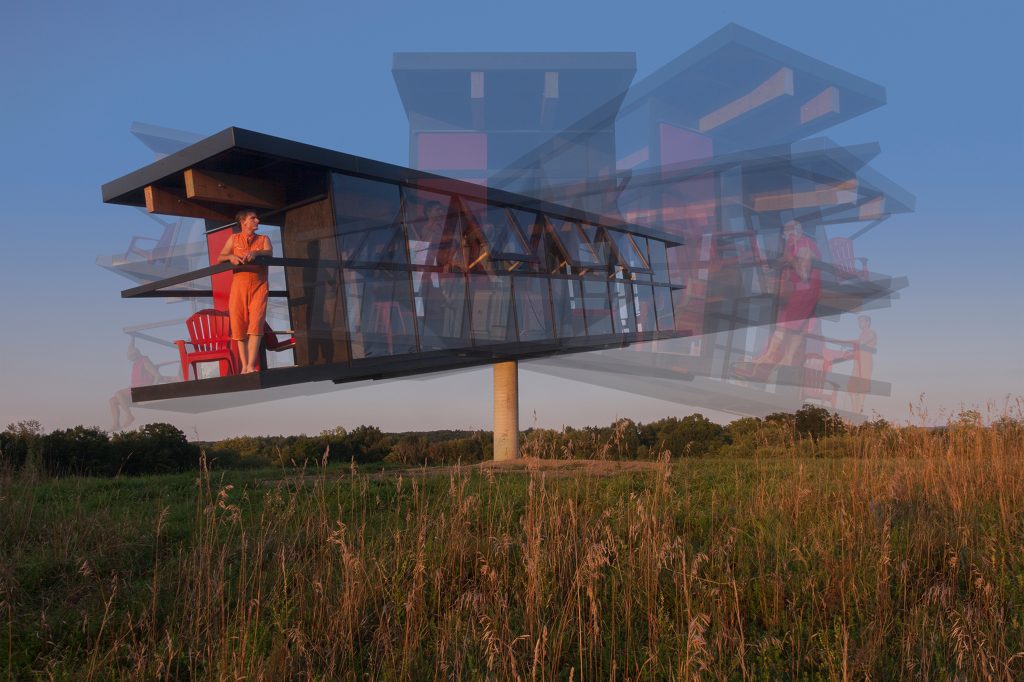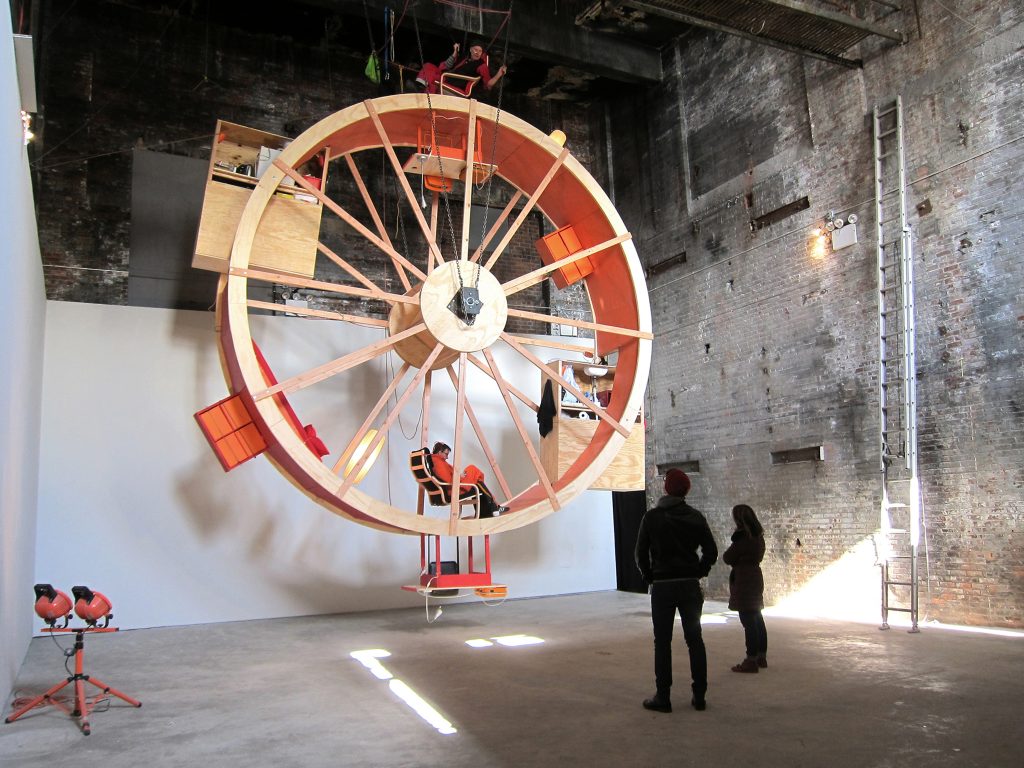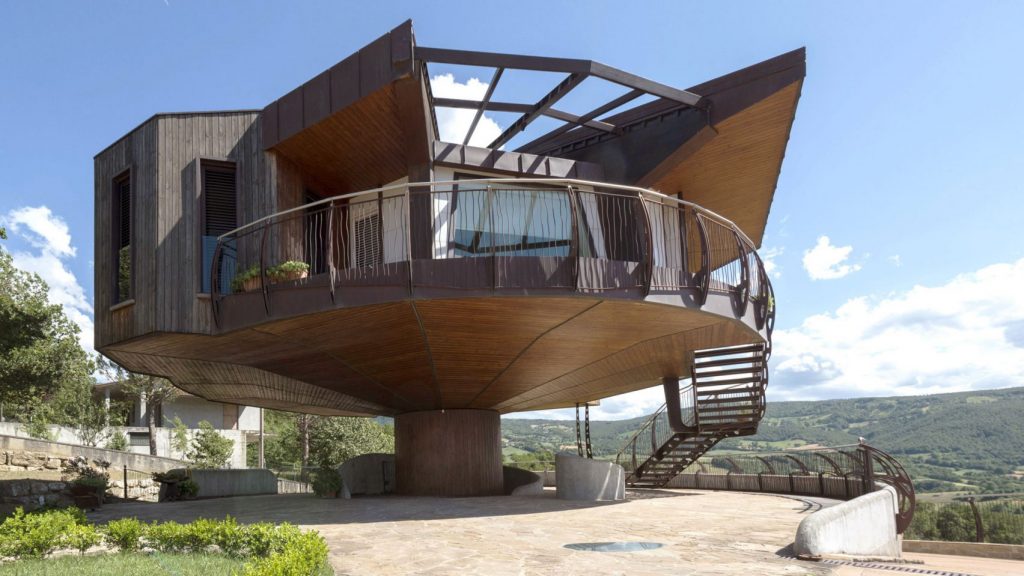If you feel dizzy at a fairground then some of these designs might not be for you – moving pieces of architecture and installations to work in tune with their environments or to tell us something about modern life.

ReActor, Photo: Richard Barnes
Alex Schweder and Ward Shelley create experimental architecture, designing, building and living in structures in locations where the public are invited not only to witness but also to actively engage with the artists in direct dialogue about their practice. This ‘performance architecture’ blurs the boundaries between art, architecture, design, and performance and questions the nature of social space and the way architecture influences human behaviour. One of their projects – ReActor was a glass space balanced on top of a single column that tilted and shifted in reaction to the wind or movement inside. When the wind blows and tilts see-saw like with the shifting weight of its inhabitants.

In Orbit, Photo: Scott Lynch
Another project, In Orbit — saw one artist living on top of a ‘hamster’ wheel while the other lived on the inside for a period of 10 days. The Orbit turned when both occupants walked. Attached to the inside of the wheel were six areas for domestic activities, which were matched by corresponding stations on the outside, so the daily tasks meant the performers had to synchronize their movements and routines.
This incredible Italian octagonal house is balanced on a central pillar and can be mechanically rotated to not only direct the house’s solar panels towards the sun but also to give the occupants varying views. Designed by Roberto Rossi it is inspired by another Italian home that the house takes cues from another Italian home that can be rotated; Villa Girasole is an experimental two-storey house built in the 1930s by architects Angelo Invernizzi and Ettore Fagiuoli. It was designed to revolve on circular tracks around a central point.

Rotating house by Roberto Rossi, ProTek
Rossi’s house near Rimini was built by Italian contractor ProTek using lightweight materials to ensure it can withstand the wear and tear caused by its rotation.

Gemma Revolving Observatory, Anmahian architects
Anmahian Winton architects studio has created this private, rotating observatory at the end of a steep, half-mile gravel drive on a remote summit in central New Hampshire, USA to take advantage of a three-mile radius ‘dark’ landscape boasting very little light pollution to obstruct the astronomical view. The Gemma Observatory’s design is intended to mimic that of its grey granite surroundings, using lock-seamed zinc cladding, while the interior is lined with fir plywood to create refuge and warmth from the harsh surroundings.